The Toshiba/Kioxia BG4 1TB SSD Review: A Look At Your Next Laptop's SSD
by Billy Tallis on October 18, 2019 11:30 AM ESTAnandTech Storage Bench - The Destroyer
The Destroyer is an extremely long test replicating the access patterns of very IO-intensive desktop usage. A detailed breakdown can be found in this article. Like real-world usage, the drives do get the occasional break that allows for some background garbage collection and flushing caches, but those idle times are limited to 25ms so that it doesn't take all week to run the test. These AnandTech Storage Bench (ATSB) tests do not involve running the actual applications that generated the workloads, so the scores are relatively insensitive to changes in CPU performance and RAM from our new testbed, but the jump to a newer version of Windows and the newer storage drivers can have an impact.
We quantify performance on this test by reporting the drive's average data throughput, the average latency of the I/O operations, and the total energy used by the drive over the course of the test.
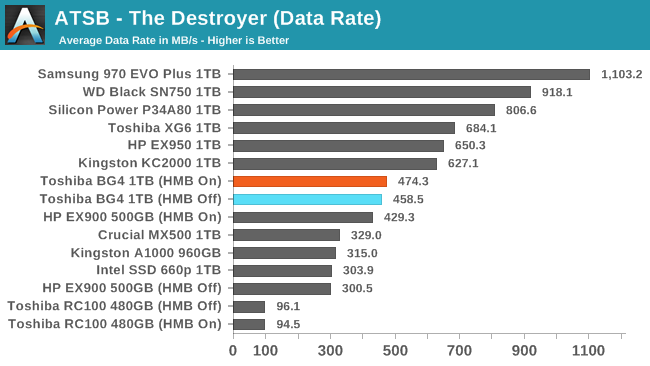
The Toshiba/Kioxia BG4's overall performance on The Destroyer is pretty good for an entry-level NVMe SSD; it clearly outperforms the Intel 660p and the Phison E8-based Kingston A1000, and is several times faster than the BG3-based RC100. The Host Memory Buffer feature doesn't have much impact on the BG4's performance, reflecting the fact that this test touches a lot of data without much locality.
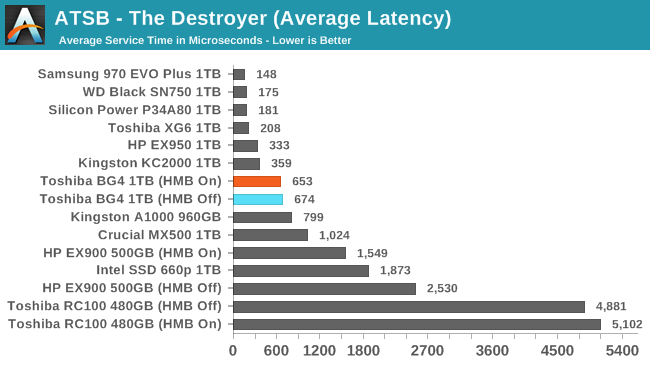
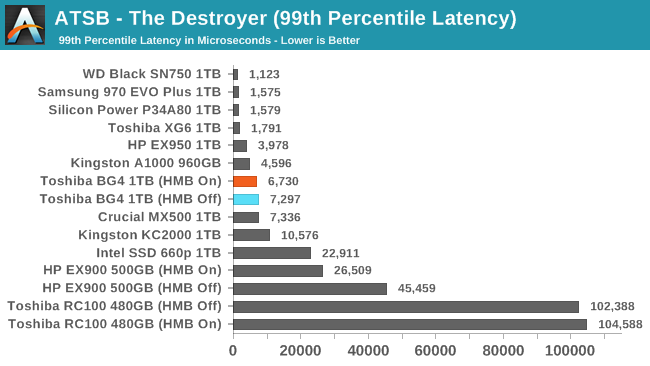
The BG4 doesn't have the latency troubles that other low-end SSDs present. Both the average and 99th percentile latency scores for the BG4 are better than the Crucial MX500 mainstream SATA drive, and the average latency also beats the Kingston A1000.
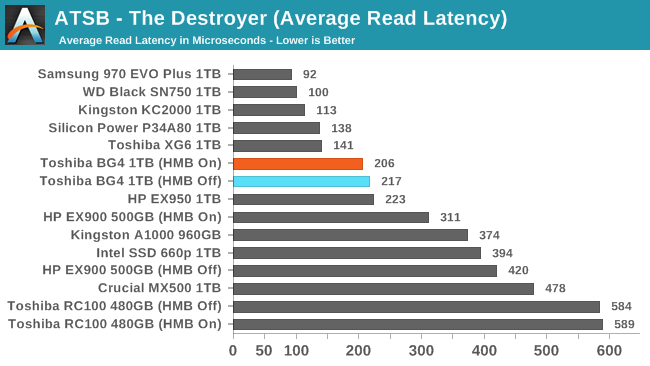
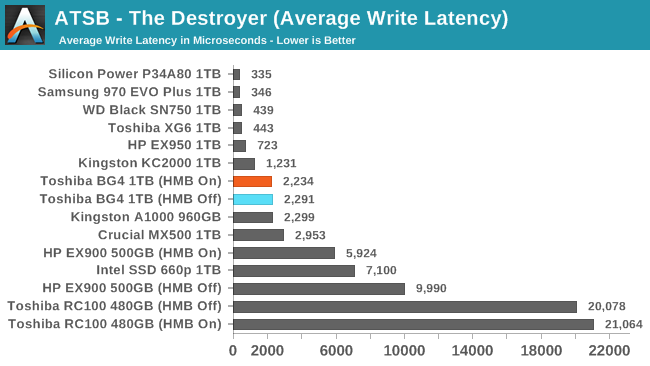
The average write latency for the BG4 during The Destroyer is clearly much higher than for the typical high-end NVMe drive, but is decent compared to other entry-level NVMe drives. For average read latency, the gap between the BG4 and high-end drives is quite a bit smaller.
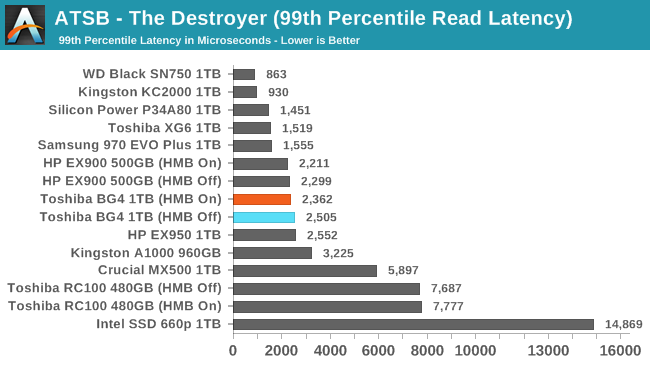
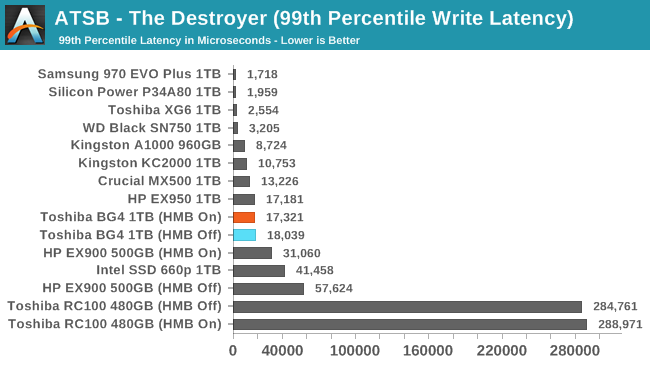
The BG4 turns in good scores for both 99th percentile read and write latencies. The write score in particular is a huge improvement over the BG3/RC100's terrible worst-case performance.
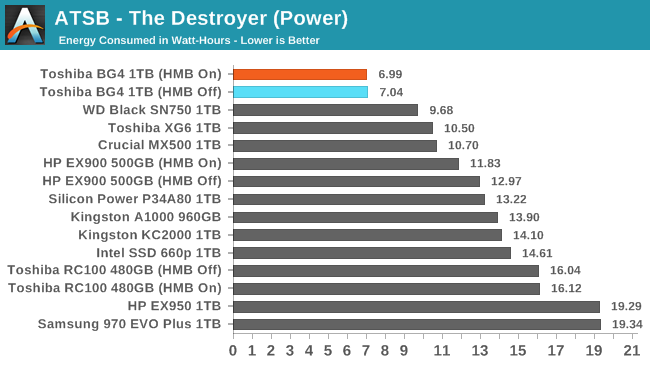
The Toshiba BG3/RC100 had pretty low power consumption, but took forever to complete The Destroyer and its total energy usage ended up being quite high. The BG4 doesn't have the performance problems, and as a result it comes away with a record-low energy usage score. Even fast and notably efficient drives like the XG6 and WD Black don't come close.










31 Comments
View All Comments
cschlise - Thursday, October 31, 2019 - link
Bought a Dell Inspiron 15 with an AMD processor recently. Dell claimed the laptop was "fixed form factor, but after removing some screws and gently prying the thing open, a wealth of upgrade options were presented. This system had one of the 2230's installed ... sized at 256GB. The board had space for a full 2280 as well as another 2.5mm drive. I installed a 512GB 2280 NVMe and 1GB 2.5mm SSD, and doubled the RAM ... for a fraction of the price Dell would have sold it to me in more expensive configurations.Bottom line ... if manufacturers are putting 2230's in consumer laptops, they aren't doing the consumer any favors ... also, if you're buying a "fixed form factor" laptop to save a few $$$, with some careful and steady hands, you'll likely find you can upgrade the sucker significantly.